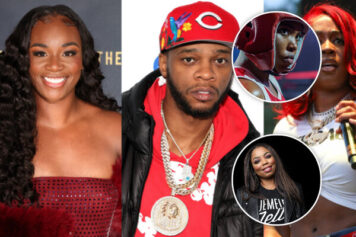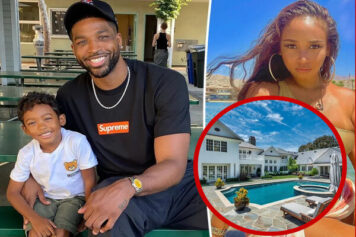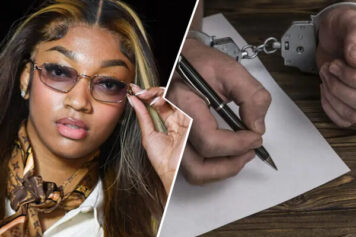Flashback to 2015.
The question that reverberated through baseball on every level was, “Where are all the Black MLB players?” and “Why are young athletes of color — from the grassroots level on up — seemingly gravitating away from the game?”
African-American players figure prominently in MLB’s all-time records book. But somewhere along the line — whether it was the infiltration and rising popularity of basketball and soccer, the overwhelming costs of travel baseball and training or analytics eliminating swag and athleticism from the sport — the Black baseball player became an endangered species… or so it seemed.
https://www.instagram.com/p/B0WzoFlHCgD/?utm_source=ig_web_copy_link
Before Commissioner Bud Selig retired in 2015, he made it his last great contribution to baseball to do whatever it took to reintroduce the game to the African-American community.
One part of that mission was to celebrate and highlight Black baseball’s significant accomplishments and historical impact.
The second goal was to develop and identify potential Black pro athletes, but before that could happen participation at the elementary school level among boys and girls had to increase as well.
Tony Reagins Oversees Black Baseball Explosion
Enter Tony Reagins, the fifth African-American general manager in MLB history, who during his time leading the Los Angeles Angels front office (2008-2011), won two American League West titles and appeared in the 2009 American League Championship Series.
MLB Commissioner Rob Manfred took over for his mentor Bud Selig and officially went full throttle, drastically expanding MLB’s diversity team, its goals and the funding needed to meet those goals.
Manfred’s first power move was appointing Reagins to serve as Major League Baseball’s Senior Vice President for Youth Programs, overseeing the league’s expanded focus on youth baseball participation.
The most exciting part for me…, “ Reagins told The Shadow League, shortly after the Andre Dawson Classic and MLB4 concluded. “I’ve been on both sides of this for almost 30 years and when I was running the Angels it was about winning the World Series. That was your sole focus.”
"This should empower you to go forward and impact the lives of others."
Hall of Famer Andre Dawson spent time this weekend at his namesake college baseball tournament, the Andre Dawson Classic, which features 6 HBCUs.@alysonfooter caught up with him: https://t.co/XjqdRg2vml pic.twitter.com/yBcGXAkPEN
— MLB Pipeline (@MLBPipeline) February 16, 2020
Tony Reagins: But this job is about changing a generation and creating opportunities for those who may not have the resources or opportunity to do something they want to do. If through what I’m doing, I can create those opportunities and avenues for them to have success and then pay it forward, that’s when you’re talking about legacy …changing a generation.
I get excited every day about being able to do that no matter where I am in the country or in the world. If we have the opportunity to change lives in a positive way than those are the wins.
Steady & Effective Progress
With such enthusiasm and passion, it’s not surprising that by 2018, Reagins was promoted to Executive Vice President of Baseball & Softball Development. In this elevated role, Reagins oversees the growth of youth and amateur levels of the sport, both domestically and internationally.
https://www.instagram.com/p/B7b4Q2oAvSK/?utm_source=ig_web_copy_link
Fast Forward to 2020 and whatever funding MLB has provided Reagins and Del Matthews, MLB’s Vice President of Baseball Development, has been money well spent.
According to Manfred,“…over the past five years about 20 percent of our first-rounders were African-American, and our Youth Academies have been built in communities largely African-American. Almost all of those kids had some touch with one of our Academy programs or diversity series events. The bigger we make those programs, the more diversity we will attract to the game.”
Every day there is a new success story.
Congrats to Mackenzie Wainwright on his commitment to @OhioStateBASE! #COMMITTED pic.twitter.com/yrRsJwyswG
— MLBDevelops (@MLBDevelops) February 26, 2020
Reagins is leading a Black baseball revolution supported by real statistics and a cultural reconnection that has reinvigorated the baseball spirits of boys and girls around the world.
I interviewed Reagins for the first time since 2015. So much has changed.
Laying The Seeds For Future Growth
Reagins: Back in 2015 we launched the PlayBall Initiative and it was just being formulated and we just started putting some muscle behind it…4.5 years later I think the program has gained in popularity.
We have more kids playing casually and just engaging with the sport across the board than in recent times.
That is really exciting for us because if we are able to reach these kids at age 5-8, there’s a better chance of having them gravitate towards the game as they get older. The chances of them becoming fans long term is greatly enhanced.
Other programs we’ve been able to create include Breakthrough Series, Elite Development Invitational, which is now, Hank Aaron Invitational and The Dream Series.
Thank you to the @Braves for being incredible hosts during the Hank Aaron Invitational. pic.twitter.com/ArhUQtiWs8
— Play Ball (@PlayBall) August 4, 2019
Also, the MLB Tour, which is an identification event where we go around the country, mostly to inner cities, find talent and put those kids into a pipeline of other development programs.
Supporting Women In Baseball & Softball
MLB’s commitment to diversity isn’t just about getting more Black players into MLB.
Reagins: It’s been exciting being able to unify the girl baseball space. That’s something we thought was important. There’s a lot of young ladies who want to play baseball specifically and we want to make sure we have a place for them to play.
⚠️ Future female aces at work. ⚠️#MLBGrit aims to find top girls baseball talent for @MLB developmental events. pic.twitter.com/mFS0pWdQfp
— MLBDevelops (@MLBDevelops) February 17, 2020
Reagins: Our softball initiatives continue to grow. We have aligned ourselves with USA softball and stakeholders like Jennie Finch and Natasha Watley and Lauren Chamberlain, so a lot of good things are happening and we’ve intentionally invested in these programs and we feel the best is yet to come.
We are focused on growing the sport of baseball and softball and focused on getting more African-Americans playing our game, especially at the grassroots level.
Reviving The Black Spirit In Baseball
“All cultures bring something different to the game,” former MLB outfielder Gary Matthews Jr. once said. “The African American player has a charisma that he brings from his culture … a little spice. That little spice is missing when we’re not participating.”
https://youtu.be/LkvsGVQ7DKY
The black disconnect with baseball and the overall decrease in participation from the grassroots to the MLB level began about the time the Steroids Era was in full swing in the mid-‘90s.
By 2012, the African-American population in baseball plummeted to 8.05%, less than half the 17.25% in 1959 when the Boston Red Sox became the last team to integrate, 12 years after Robinson broke baseball’s color barrier. In fact, from 1990 to 1995, nine of the 12 American and National League MVP winners were African -American.
By 2015, the number had dipped to less than 8 percent.
Changing The Culture, Paying It Forward
Reagins: But for me, the real story is how many kids we are impacting that aren’t in MLB. How many kids are coming through our programs, going to college, returning to the community and being a leader and an example for young people growing up?
Those are the real stories for me and we have tons of them and we have aspirations of continuing to create more programming to give these kids that want to go to college those avenues to do that. So that is our focus and if we can get a chosen few to MLB then that’s icing on the cake
.@BsbSouthern clears 'em with a BIG double at the Andre Dawson Classic.
LIVE on @MLBNetwork, the Classic provides exposure for HBCU baseball programs. pic.twitter.com/dH1wtqfVVT— MLB (@MLB) February 15, 2020
Reagins: Look at the work we are doing down in New Orleans with that program we started in 2012 and kids are now going to college, graduating and coming back. We just hired two young people at the academy that will work there, so they’ve graduated from college, played baseball and now they can come back to the academy and teach and train young people so they have a pathway of success already.
There are plenty of success stories. Guys like Hunter Greene, the second overall pick in the 2017 Draft by the Cincinnati Reds, and Dominic Smith, who’s in the majors with the NY Mets.
https://youtu.be/sRFG9_9ZO-Y
Resurrection of The Black Knight: Draft Success
As baseball continues to bubble at the bottom, we also see increases in the percentage of Black players being drafted into the Big Show.
When Royce Lewis, a shortstop/outfielder from Aliso, Calif. and two-way phenom Greene went No.1 and No. 2 in 2017, for only the fourth time in history, after 1980 (Darryl Strawberry and Garry Harris), 1991 (Brien Taylor and Mike Kelly) and 2003 (Delmon Young and Rickie Weeks), it was a watershed moment for the revitalization of African-American talent and proof of a replenished diversity pipeline in baseball.
Then In 2018, it was announced that the percentage of black players from the United States and Canada on opening-day active rosters rose to 8.4 percent, its highest level since at least 2012.
In the past two MLB drafts about 60 of the players chosen honed their baseball skills in at least one of MLBs programs geared towards identifying, developing and encouraging minority talent. 12 of the 78 selections on Day 1 of the 2019 MLB Draft were African-American (15.4%), continuing a trend that has seen Black players — being drafted more frequently.
Events like the Hank Aaron Invitational offer a safe haven to just focus on the game. https://t.co/nNyci4na3A 🙏 pic.twitter.com/iyKjgsUyZ1
— MLBDevelops (@MLBDevelops) August 1, 2019
With the 2020 Draft on the horizon, there’s more elite African-American talent on the board. Reagins and his team’s diversity machine is clicking on all levels.
But wait…I thought Blacks didn’t play baseball?
Reagins: The biggest misconception is that Black youth aren’t playing. I’m actually traveling around the world but specifically in the US. I see countless African-American youngsters playing the game at a high level and we’re engaged in a large majority of those young people.
University of Texas ballers Trey Faltine and redshirt junior Cam Williams are products of that engagement, as they’ve risen through the MLB Develops pipeline. Cam’s father, Reggie Williams played four MLB seasons with the Anaheim Angels and Los Angeles Dodgers.
Faltine has already won the starting shortstop job as a freshman and is making an impact with his sizzle.
Way, way, way in the hole. @TFaltine showed off that 💪, y’all.#HookEm pic.twitter.com/ZUtTgMhgQy
— Texas Baseball (@TexasBaseball) February 19, 2020
The Future of Black Baseball
Reagins: If we’re at 10-12 percent African-Americans in MLB by 2025 then I’ll be happy with that. There’s a chance that that can happen.10 percent is realistic but if we can get beyond that it would be really exciting.
Reagins’ success aligns with last year’s Jackie Robinson Centennial celebration and this year’s 100th anniversary of the Negroe Leagues.
Reagins: It’s all very important. Being able to pass on the history and legacy of the Negro Leagues and Jackie Robinson and Buck O’Neil and Curt Flood. Being able to bring that to the forefront and discuss it in a positive way and giving our young people that information. I think it’s incumbent upon us as leaders in the sport to embrace the history of our game from an athletic and social standpoint.
Reagins and MLB have certainly done that around the world. With 30 Youth academies in DR and 11 more in the United States, the classic phrase from the movie Field of Dreams, “if you build it, they will come,” is straight facts when it comes to youth and baseball participation.
Congrats to @hasan_standifer on his commitment to @GoJSUTigersBSB!#COMMITTED pic.twitter.com/RQoS4ZtWb2
— MLBDevelops (@MLBDevelops) November 9, 2019
Reagins: At the end of the day, the most important thing is a place to play so the kids can get out and play the game and let their talents take them wherever it’s going to take them.
But I think being able to have good coaching, instruction, equipment, and access is a huge part of it. Being good people and having parents that care about the upward movement of young people who want to play the game is important.
That slow fuse that you see burning is Black baseball, so get ready for the explosion because it’s coming.



